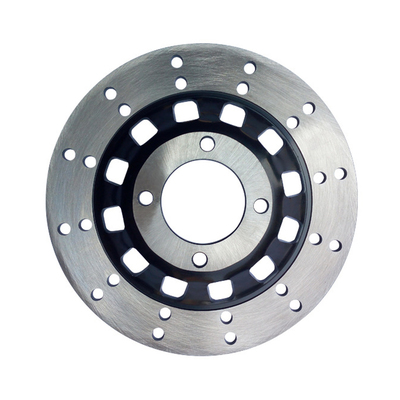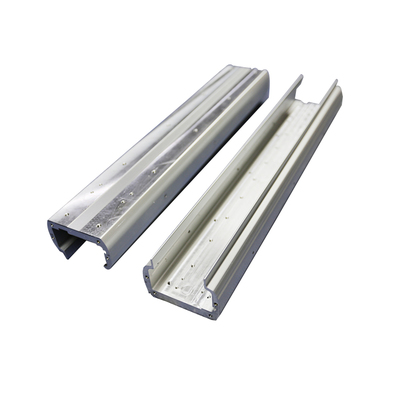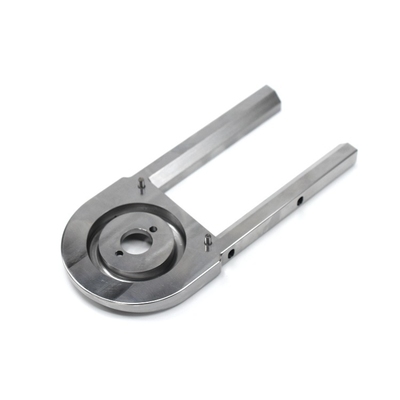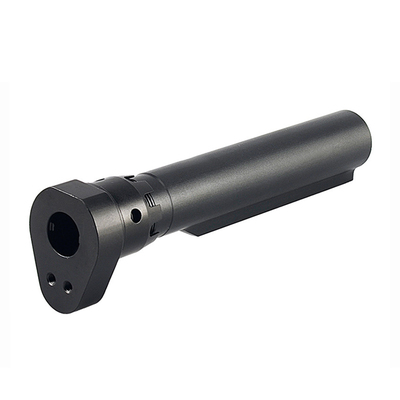Rheological Stress of 7075 Aluminum Alloy Under Hot Compression Deformation
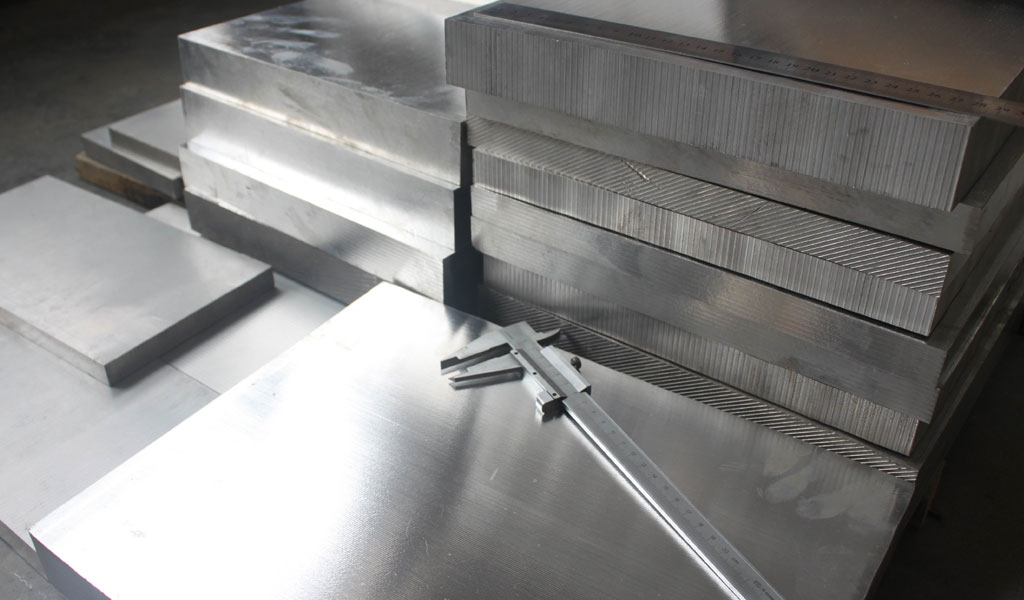
7075 aluminum alloy is one of the most commonly used high-strength aluminum alloys, particularly in aerospace, defense, and military applications. Known for its exceptional strength-to-weight ratio and high performance at elevated temperatures, 7075 is a versatile material used in a variety of applications where mechanical properties such as tensile strength, fatigue resistance, and toughness are critical. However, understanding the rheological stress of 7075 aluminum alloy under hot compression deformation is essential for optimizing processing techniques such as forging, extrusion, and rolling.
Hot compression deformation refers to the plastic deformation of a material under high temperature and stress, and it plays a crucial role in determining the material’s final properties. In the case of 7075 aluminum alloy, hot working processes often occur at temperatures ranging from 300°C to 500°C, depending on the desired characteristics of the final product.
Rheological stress, in the context of deformation, is defined as the stress required to initiate and sustain the plastic flow of material under a particular temperature and strain rate. The understanding of this stress is important for designing optimal processing conditions that minimize defects such as cracking, poor microstructure, and surface imperfections during the hot deformation process.
The rheological stress of 7075 aluminum alloy is affected by several factors, including the strain rate, temperature, and the intrinsic material properties. The ability to predict and control the rheological behavior of 7075 alloy during hot compression deformation enables engineers to optimize forming processes and improve the quality of the final product.
Material Properties of 7075 Aluminum Alloy
Before diving into the specifics of rheological stress, it is important to understand the properties of 7075 aluminum alloy. This alloy is primarily composed of aluminum, zinc, magnesium, and copper, with small amounts of other elements like chromium and zirconium. The chemical composition plays a significant role in the material's mechanical properties, including strength, ductility, and response to thermal processing.
Table 1: Chemical Composition of 7075 Aluminum Alloy (wt%)
| Element | Composition (%) |
|---|---|
| Aluminum (Al) | 87.1–91.4 |
| Zinc (Zn) | 5.1–6.1 |
| Magnesium (Mg) | 2.1–2.9 |
| Copper (Cu) | 1.2–2.0 |
| Chromium (Cr) | 0.18–0.28 |
| Manganese (Mn) | 0.3 max |
| Silicon (Si) | 0.4 max |
| Titanium (Ti) | 0.2 max |
| Iron (Fe) | 0.5 max |
7075 aluminum alloy exhibits a high tensile strength, typically around 570 MPa in the T6 temper, and a yield strength in the range of 505 MPa. Its high strength is due to the presence of zinc, copper, and magnesium, which allow for the formation of precipitates that strengthen the material through the age-hardening process. These properties make 7075 alloy an ideal candidate for applications requiring high structural integrity under stress.
Table 2: Mechanical Properties of 7075 Aluminum Alloy (T6 Temper)
| Property | Value |
|---|---|
| Tensile Strength (MPa) | 570 |
| Yield Strength (MPa) | 505 |
| Elongation (%) | 11.0 |
| Modulus of Elasticity (GPa) | 71 |
| Hardness (Brinell) | 150 |
Hot Compression Deformation
Hot compression deformation involves applying stress to a material at elevated temperatures to induce plastic flow. For aluminum alloys, this process is typically carried out at temperatures ranging from 300°C to 500°C, where the material undergoes significant changes in its microstructure. These changes include the formation and dissolution of precipitates, grain growth, and changes in the dislocation density.
When 7075 aluminum alloy is subjected to hot compression, the rheological stress it experiences is influenced by several key factors:
-
Temperature: As the temperature increases, the material's resistance to deformation generally decreases, leading to a reduction in the rheological stress. This is because the material's flow stress decreases due to enhanced atomic mobility, which facilitates dislocation movement and recovery processes. However, if the temperature exceeds the optimal hot working range, the material may become prone to grain growth and reduced mechanical properties.
-
Strain Rate: The strain rate refers to the speed at which the material is deformed. A higher strain rate typically results in an increase in the rheological stress, as the material has less time to undergo recovery processes such as dislocation annihilation and grain boundary sliding.
-
Strain: As the material is deformed, its microstructure evolves. Strain leads to work hardening, which initially increases the flow stress. However, at higher strains, dynamic recrystallization (DRX) and recovery mechanisms can lower the flow stress by reducing dislocation density and refining the grain structure.
-
Precipitation Hardening: The 7075 alloy undergoes significant changes in its precipitation structure during hot deformation. The behavior of the precipitates, particularly those formed by zinc, magnesium, and copper, can affect the flow stress of the material. Precipitate coarsening or dissolution during hot deformation influences the alloy’s ability to retain strength at elevated temperatures.
Figure 1: Microstructure of 7075 Aluminum Alloy Under Hot Compression
Image caption: The microstructure of 7075 aluminum alloy after hot compression deformation showing a combination of grain boundaries, precipitates, and dislocation structures at various temperatures.
Rheological Stress and Flow Stress Modeling
The rheological stress of 7075 aluminum alloy during hot compression can be modeled using various constitutive equations, which describe the relationship between stress, strain, strain rate, and temperature. One commonly used model for aluminum alloys is the Arrhenius-type equation, which accounts for the temperature dependence of flow stress:
σ = A ⋅ ε n ⋅ exp ( RT Q )Where:
- σ\sigma is the flow stress,
- ε\varepsilon is the strain rate,
- nn is the strain rate sensitivity exponent,
- AA is a material constant,
- QQ is the activation energy for deformation,
- RR is the universal gas constant,
- TT is the absolute temperature.
This equation highlights the exponential dependence of flow stress on temperature, and the strain rate sensitivity can be used to estimate the material’s response to different deformation conditions.
Table 3: Parameters for Flow Stress Modeling of 7075 Aluminum Alloy
| Parameter | Value |
|---|---|
| Activation Energy (Q) | 160–170 kJ/mol |
| Material Constant (A) | Variable |
| Strain Rate Sensitivity (n) | 0.03–0.05 |
Influence of Temperature on Rheological Stress
The temperature plays a critical role in determining the rheological stress of 7075 aluminum alloy during hot compression. As the temperature increases, the material softens due to enhanced atomic diffusion and dislocation movement. However, if the temperature exceeds a certain threshold, detrimental effects such as grain growth or precipitate dissolution can lead to a decrease in strength and an increase in the likelihood of defects like flow localization and cracking.
Figure 2: Temperature Dependence of Flow Stress for 7075 Aluminum Alloy
Graph caption: The flow stress of 7075 aluminum alloy decreases with increasing temperature, showing a typical softening behavior under hot deformation conditions.
Table 4: Flow Stress of 7075 Aluminum Alloy at Various Temperatures
| Temperature (°C) | Flow Stress (MPa) at 10 s−1^{-1} |
|---|---|
| 300 | 240 |
| 350 | 190 |
| 400 | 140 |
| 450 | 110 |
| 500 | 85 |
Influence of Strain Rate on Rheological Stress
The strain rate has a direct influence on the rheological stress. At higher strain rates, the material experiences higher flow stress, as there is less time for recovery mechanisms to operate, such as dislocation annihilation or dynamic recrystallization. Conversely, at lower strain rates, the material can undergo more significant recovery, leading to a reduction in the flow stress.
Figure 3: Strain Rate Dependence of Flow Stress for 7075 Aluminum Alloy
Graph caption: The flow stress of 7075 aluminum alloy increases with strain rate, showing the typical strain rate sensitivity behavior of aluminum alloys.
Table 5: Flow Stress of 7075 Aluminum Alloy at Various Strain Rates
| Strain Rate (s−1^{-1}) | Flow Stress (MPa) at 400°C |
|---|---|
| 0.01 | 110 |
| 0.1 | 125 |
| 1 | 140 |
| 10 | 160 |
| 100 | 180 |
Strain and Work Hardening
The response of 7075 aluminum alloy to hot compression deformation is also influenced by the strain. At low strain levels, the material undergoes work hardening, which increases the flow stress. However, at higher strains, dynamic recrystallization (DRX) may occur, leading to a reduction in dislocation density and, consequently, a reduction in flow stress.
Figure 4: Strain Dependence of Flow Stress for 7075 Aluminum Alloy
Graph caption: The flow stress of 7075 aluminum alloy shows an initial increase due to work hardening, followed by a decrease due to dynamic recrystallization at higher strains.
Conclusion
The rheological stress of 7075 aluminum alloy during hot compression deformation is influenced by several key factors, including temperature, strain rate, and strain. Understanding these influences allows for the optimization of hot working processes to achieve the desired mechanical properties and minimize defects. The use of flow stress models, such as the Arrhenius-type equation, helps to predict the material’s behavior under various processing conditions.
Further studies and experimental investigations are needed to fully understand the complex interactions between temperature, strain rate, and microstructure evolution during hot deformation. By controlling these factors, manufacturers can achieve high-performance products with improved mechanical properties and structural integrity.
Reprint Statement: If there are no special instructions, all articles on this site are original. Please indicate the source for reprinting:https://www.cncmachiningptj.com/,thanks!
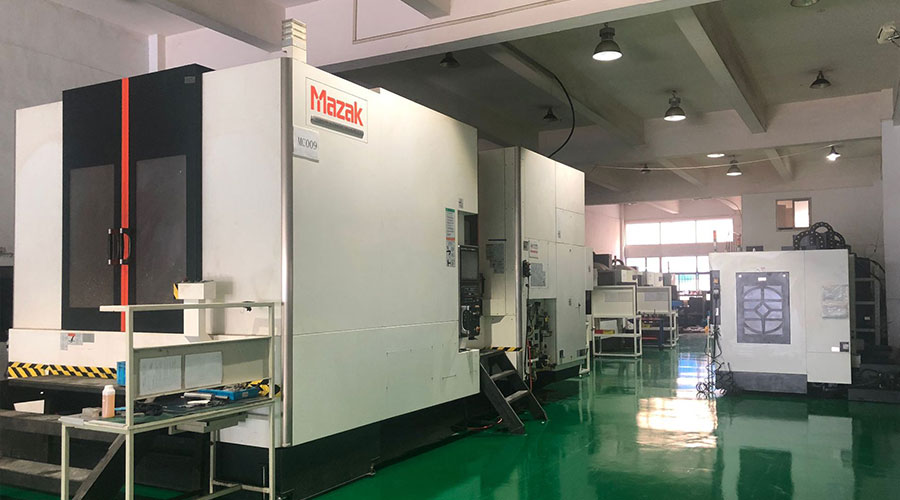 3, 4 and 5-axis precision CNC machining services for aluminum machining, beryllium, carbon steel, magnesium, titanium machining, Inconel, platinum, superalloy, acetal, polycarbonate, fiberglass, graphite and wood. Capable of machining parts up to 98 in. turning dia. and +/-0.001 in. straightness tolerance. Processes include milling, turning, drilling, boring, threading, tapping, forming, knurling, counterboring, countersinking, reaming and laser cutting. Secondary services such as assembly, centerless grinding, heat treating, plating and welding. Prototype and low to high volume production offered with maximum 50,000 units. Suitable for fluid power, pneumatics, hydraulics and valve applications. Serves the aerospace, aircraft, military, medical and defense industries.PTJ will strategize with you to provide the most cost-effective services to help you reach your target,Welcome to Contact us ( sales@pintejin.com ) directly for your new project.
3, 4 and 5-axis precision CNC machining services for aluminum machining, beryllium, carbon steel, magnesium, titanium machining, Inconel, platinum, superalloy, acetal, polycarbonate, fiberglass, graphite and wood. Capable of machining parts up to 98 in. turning dia. and +/-0.001 in. straightness tolerance. Processes include milling, turning, drilling, boring, threading, tapping, forming, knurling, counterboring, countersinking, reaming and laser cutting. Secondary services such as assembly, centerless grinding, heat treating, plating and welding. Prototype and low to high volume production offered with maximum 50,000 units. Suitable for fluid power, pneumatics, hydraulics and valve applications. Serves the aerospace, aircraft, military, medical and defense industries.PTJ will strategize with you to provide the most cost-effective services to help you reach your target,Welcome to Contact us ( sales@pintejin.com ) directly for your new project.
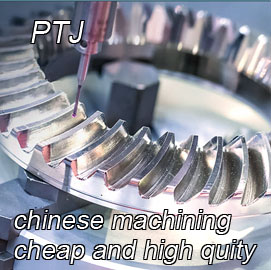
- 5 Axis Machining
- Cnc Milling
- Cnc Turning
- Machining Industries
- Machining Process
- Surface Treatment
- Metal Machining
- Plastic Machining
- Powder Metallurgy Mold
- Die Casting
- Parts Gallery
- Auto Metal Parts
- Machinery Parts
- LED Heatsink
- Building Parts
- Mobile Parts
- Medical Parts
- Electronic Parts
- Tailored Machining
- Bicycle Parts
- Aluminum Machining
- Titanium Machining
- Stainless Steel Machining
- Copper Machining
- Brass Machining
- Super Alloy Machining
- Peek Machining
- UHMW Machining
- Unilate Machining
- PA6 Machining
- PPS Machining
- Teflon Machining
- Inconel Machining
- Tool Steel Machining
- More Material

